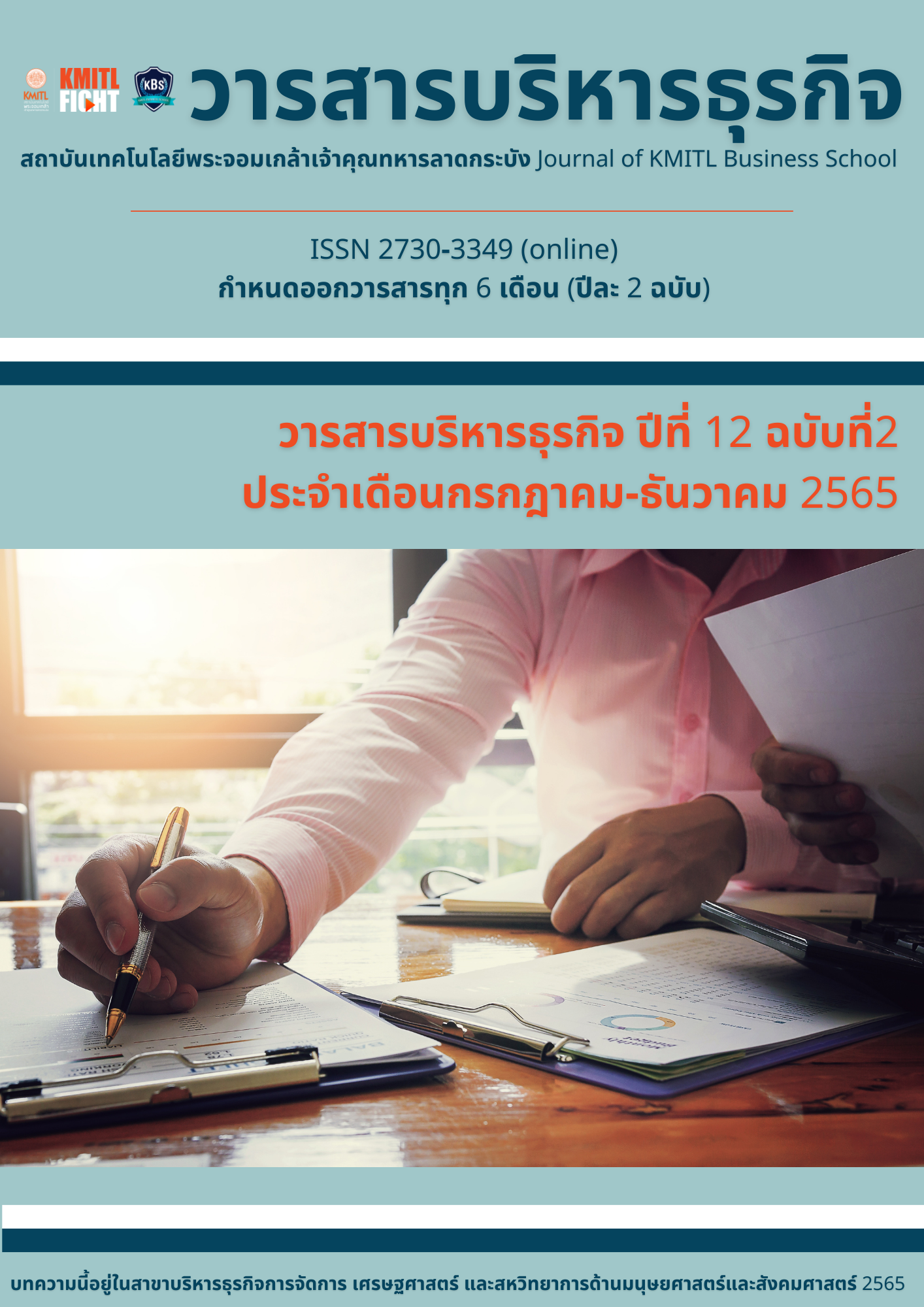Economic Factors that Determine Currency Exchange Rate between Baht and Yuan
Main Article Content
Abstract
The purpose of the research is to study the exchange rate system between Baht and Yuan and to study the economic factors that determine the currency rate between Baht and Yuan. The researchers use secondary data analysis and time series data from 2006 to 2020 (180 months). The data are statistically analyzed by mean, minimum, maximum standard deviation, which is computed by the Statistical Package for the Social Sciences program (SPSS).
The findings revealed as follows: the economic factors that are Interbank Rate (IBR), Inflation Rate (INF), Real Effective Exchange Rate (REER), and SET Index (SET), are influencing the exchange rate of Baht to Yuan at the level of statistical significance level 0.05. The results support hypothesis—the economic factors that influence currency exchange rates of Baht to Yuan. However, the export value of China (XCN) and the Current Account (CA) are not influenced by the currency exchange rate of Baht to Yuan at a statistical significance level of 0.05. So that the results reject hypothesis. This study supports the investors who do international trading for the purpose of buying and selling products or services such as trade, investment, businesses, and the tourism sector. For this reason, it makes it possible for the exchange rate between Baht and Yuan based on economic factors to be predictable.
Keywords: 1.Economic factors 2.Currency exchange rate 3.Baht 4.Yuan
Article Details

This work is licensed under a Creative Commons Attribution-NonCommercial-NoDerivatives 4.0 International License.
Journal of KMITL Business School is available both online and in printed version.
**All articles or opinions presented in this issue of the Journal of KMITL Business School reflect the thoughts of their respective authors. This journal serves as an independent platform for a variety of viewpoints. Authors bear full responsibility for the content of their articles.**
**All articles published in this journal are copyrighted by KMITL Business School, King Mongkut's Institute of Technology Ladkrabang. The editorial team permits copying or using articles, but a reference to the journal is required.**
References
กรรณิกา ศรีสังข์งาม และกิตติพันธ์ คงสวัสดิ์เกียรติ. (2559). “ปัจจัยทางเศรษฐกิจที่กำหนดอัตราแลกเปลี่ยนระหว่างเงิน
บาทกับเงินหยวน (Economic Factors that Determine Currency Exchange Rate between Baht and Yuan)”. วารสารรังสิตบัณฑิตศึกษาในกลุ่มธุรกิจและสังคมศาสตร์, 1(2), 81-98.
โครงการกิจกรรมการเชื่อมโยงงานวิจัยกับภาคนโยบาย สำนักงานกองทุนสนับสนุนการวิจัย (สกว.).
(2554). นโยบายการเงินแบบกำหนดเป้าหมายเงินเฟ้อของไทย. สืบค้นเมื่อ 10 ธันวาคม 2564, จาก http://prp.trf.or.th/trf-policy-brief/นโยบายการเงินแบบกำหนด
ชิดชนก จันทนนตรี, พิชญา กาวิหก และสันติชัย ศรีคำ. (2560). “ปัจจัยทางเศรษฐกิจและการเมืองที่มีผลต่อ
อัตราแลกเปลี่ยนของประเทศไทย”. วารสารเศรษฐศาสตร์รามคำแหง, 3(2), 60-87.
ธนาคารแห่งประเทศไทย. (2565). ดุลการชำระเงิน (Balance of Payments) คือ. สืบค้นเมื่อ 10 ธันวาคม 2564, จาก https://www.bot.or.th/Thai/ConsumerInfo/Documents/Balance_of_Payments7May2018.pdf.
ธนาคารแห่งประเทศไทย. (2565). นโยบายการเงิน. สืบค้นเมื่อ 10 ธันวาคม 2564, จาก https://www.bot.or.th/Thai/BOTStoryTelling/Pages/MonetaryPolicy_StoryTelling_Acad emicAndFI.aspx.
ธนาคารแห่งประเทศไทย. (2565). อัตราดอกเบี้ยนโยบาย. สืบค้นเมื่อ 10 ธันวาคม 2564, จาก https://www.bot.or.th/Thai/MonetaryPolicy/Pages/OverviewPolicyRate.aspx.
ธนาคารแห่งประเทศไทย. (2565). อัตราแลกเปลี่ยน. สืบค้นเมื่อ 10 ธันวาคม 2564, จาก https://www.bot.or.th/Thai/MonetaryPolicy/MonetPolicyKnowledge/Pages/ExchangeRate.aspx.
ศูนย์เทคโนโลยีสารสนเทศและการสื่อสาร สำนักงานปลัดกระทรวงพาณิชย์ โดยความร่วมมือจากกรมศุลกากร. (2564). การค้าระหว่างประเทศของไทย กับ โลก. สืบค้นเมื่อ 15 ธันวาคม 2564, จาก http://tradereport.moc.go.th/Report/Default.aspx?Report=TradeThSummary
เศรษฐเสวนา จุฬาฯทัศนะ. (2562). บัญชีเดินสะพัดของไทย. สืบค้นเมื่อ 10 ธันวาคม 2564, จาก https://www.thansettakij.com/content/columnist/398981.
MoneyHub. (2022). วางแผนรับมือกับ ภาวะเงินเฟ้อ. สืบค้นเมื่อ 10 ธันวาคม 2564, จาก https://moneyhub.in.th/article/รับมือกับ-ภาวะเงินเฟ้อ/.


